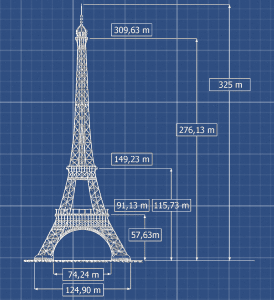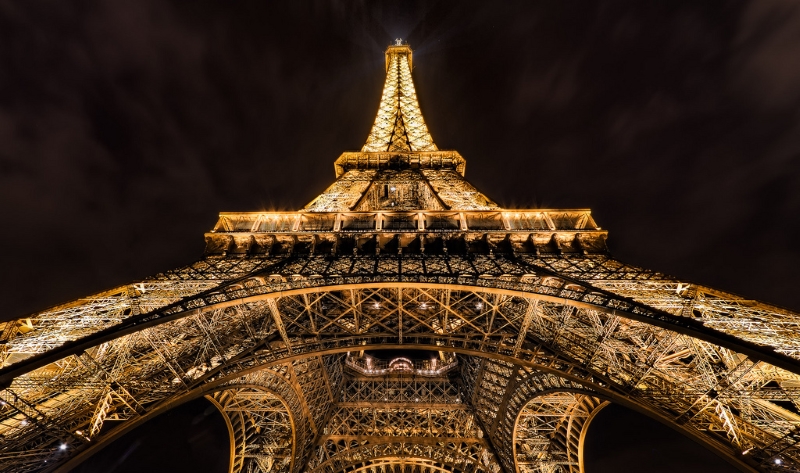Eiffel Tower
|
The Eiffel Tower is one of the most iconic structures in the World. This lattice iron tower was built in 1889 by Gustave Eiffel as the entrance for the World’s fair. There are so many superlatives about the tower it’s impossible to know where to start:
TriviaThen there are pieces of trivia:
However, the most startling piece of trivia that I’ve heard about the tower is that it weighs less than the cylindrical column of air that it sits in! That’s right, if cylindrical tube were placed over the tower, the weight of the volume if air inside the tube would exceed that of the metal in the tower. (I believe this fact might have been mentioned on Mythbusters). Is it true? Let’s find out … IronAccording to the internet, the iron used in the construction of the tower came from Reșița in Romania. The density of wrought iron is approximately: 7.70 g/cm3 At a weight of 7,300 tonnes, this amount of iron has a volume of approximately: 948 m3
That's not a lot of iron. The lattice structure is pretty efficient. 
|
Calculation
Using the dimensions of the foot of the tower, the diameter of the cylinder can be calculated.
 |
The arch at the bottom of the tower is pretty wide. Wide enough, in fact, that it has tempted various pilots to fly underneath the tower. If you search the web there are numerous reported incidents of this happening, including a pair of dog fighting combatants during WWII, a Mosquito celebrating the liberation of France, and even a mystery pilot in a stolen aircraft. Here's a video of a crazy man doing it in a Beechcraft Bonanza. |
|
Here's what a cylinder sleeeve over the tower would look like: Knowing the height of the tower, combined with the disc diameter we determined above allows us to calculate the volume of the cylinder. There is approximately 7.96 million m3 of air in this tube. The density of air is not a constant, so this next step is only going to be approximate. Air density changes with altitude, local pressure, temperature, and even humidity. The standard figure for the density of air at sea level at 15°C is 1.225 kg/m3 However, Paris is not a sea level, and the top of the tower (where the air will be a little thinner and colder) certainly isn't. |
 |
Atmosphere
The altitude at the base of the tower is approx 35m above sea level, putting the top of the tower at 360m. The mean daytime temperature in Paris is pretty close to 15°C, so we'll use this standard value. We'll also estimate the dewpoint temperature at 5°C (this allows us to calculate the change in density of the air based on water vapor).
The density of air at the foot of the tower under these conditions is 1.216 kg/m3
The density of air at the top of the tower under these conditions is 1.169 kg/m3

There's almost a 4% drop in density of the air between the top and bottom (small, but measurable). It's not a linear falloff, but as a first order approximation, considering all the other approximaations we're making, we can take a simple average for the density of the air to give a value of 1.19 kg/m3.
Multiplying by the volume we get a value of approx 9,400 for the mass of the air. Even with our approximations, this is certainly greater than the quoted 7,300 tonnes for the mass of the iron.
It's true - the mass of the air in the cylinder surrounding the Eiffel Tower, is heavier than the tower itself!
Lattice structures really are very efficient!
 image: Scott Kublin
image: Scott Kublin
If you'd like to learn a little more about the stability of lattice structures, click here.
If you'd like to learn a little more about how our atmosphere changes with altitude, click here.
If you'd like to learn what a cloud 'weighs', click here.
You can find a complete list of all the articles here. Click here to receive email alerts on new articles.
Click here to receive email alerts on new articles.

